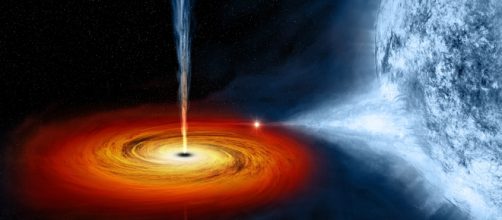Scientists are hoping to solve some of the mysteries of black holes after they discovered a Super-massive Black Hole, one hundred thousand times larger than the sun, right at the middle of our galaxy, the Milky Way. It could well be one of the biggest ever black holes seen in our galaxy.
The discovery may provide further knowledge about the unknown and how such outlandish things form. Japanese astronomers were using a powerful telescope in the Chilean desert to investigate a gas cloud when they chanced upon the object.
Scientists spot immense gravitational pull
The scientists also discovered that the gases inside the cloud were moving at insanely different speeds compared to other galactic clouds. A closer look confirmed that the molecules inside this cloud were experiencing a pull by titanic gravitational forces.
This large cloud is about 150 trillion kilometers wide and 200 light years away from the center of the Milky Way. The astronomers used computer modeling to be sure about the black hole, which measures 1.4 trillion kilometers across.
It’s an IMBH!
If confirmed, this new object would be the second largest black hole ever to be seen in the Milky Way after Sagittarius A. According to the Independent, these types of super-massive black holes are also known as intermediate-mass black holes (IMBHs).
Experts believe that they form when smaller black holes move into bigger ones. This is the first time that evidence of such middle and bigger holes have been found. The scientists may also finally get proof of generational relativity that can contribute greatly to the progress of modern physics.
University of California expert Brooke Simmons told The Guardian that astrophysicists have been scouring space to collect observational evidence for super-massive and stellar mass black holes for decades. He added that although it is largely believed that the gigantic ones form from the smallest ones, there has been little evidence "for a black hole with a mass" in-between these extremes.
Black hole may ultimately merge
Meanwhile, Keio University astronomer Tomoharu Oka stated that this newly-found black hole will slowly move and merge with Sagittarius A, making the super-massive black hole ever more gigantic. The findings of this research have been published in Nature Astronomy.
Theoretical studies predict that there are 100 million to one billion black holes inside the Milky Way. To date, only 60 or so have been identified. Black holes have insanely powerful gravitational fields that absorb all light that passes near it. They do not reflect anything so they are extremely difficult to spot.
For further reading about space, you can view this story about the first female commander of International Space Station who returned to Earth.


